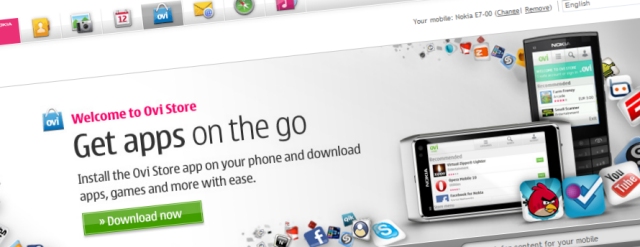Right then, if you can remember the three basic choices of who pays for applications (the user buys, the developer gives up time, or a third party pays for access), it’s time to look at the third option, which is proving to be very attractive for some developers... having a third party pay to get access to the eyes of the users.
Advertising.
Specifically in-app advertising, with banners to click on during the use of an application, with targeted offers and services to those using it or playing the game. Couple that with sensors such as GPS and you can have some accurate delivery stats for advertisers to work with.
You could easily argue that in-app advertising has become the go-to method for developers to open an income stream, as opposed to pushing for the purchase and direct payment options we’ve looked at previously. However, even if that were true, it is not the only answer. The smart developer will think about all their options while they design their applications to make the best use of the tools on offer, and many mix and match, with a “Lite” application also carrying some advertising that is removed or suppressed when you buy the full version.
This is an approach that reaches the best of both worlds, capturing the people who expect their applications to be free at the point of download but still providing a small income stream, to join the income from purchases.
So let’s turn to one of the providers of in-app advertising, inneractive, who are supporting this content series. As a cross-platform solution with a large number of partners in advertising network and agency circles, it’s well placed to illustrate the benefits.
The first thing to realise is that in-app advertising has progressed beyond a few people trying out some ideas. Most of the major developers in the mobile space have seriously explored in-app advertising. We’ve mentioned previously Rovio with its Android version of Angry Birds being exclusively ad-driven for revenue; but other big names, such as Firemint, have apps that rely on advertising too.
Part of that reliance on an ad network is knowing that everything coming up on the screen is worth something - it’s all well and good having a banner space, but if your network can’t provide a solid advert to put in there, any click is wasted. The “fill rate”, how many external ads are shown, can be a key consideration in the choice of network. “...If we are talking about averages, we generally see a global fill rate of over 95%,” Hilell Fuld, Head of Marketing at inneractive tells me, “and our fill rate is revenue-generating ads only and no ads promoting ourselves.” As inneractive works with a number of advertising networks, they have a much larger pool of adverts that they can serve to applications and users of the services.
It’s not just a matter of having a space in your application to show some ads. You can’t expect people to click just because they like you. Like the balancing act of a trial “Lite” version with less features that leads people to buy the full application, you have to balance the frustration that an advert can cause a user with showing the adverts often enough to bring in a respectable income. Like any method of monetisation, find that sweet spot (which varies from application to application) and you’ll be on course for a very nice earner - or for at least as long as you can keep people using the app and clicking the adverts. It’s in the best interests of inneractive to maximise this, for themselves and the developers, so documentation and advice on best practices to maximise clicks and revenue are available on their website.
And it changes with the user - Symbian users are proving to be one of the most profitable types of user, per head. Compared to the average ‘effective cost per thousand impressions’ (eCPM) of between 50 cents and a dollar, the apps in the Ovi Store with inneractive’s in-app advertising average just over $3 eCPM. Whether this is due to the global reach of the Ovi Store, or the types of customer using Nokia handsets, there is definitely potential in the system to justify an advertising supported application.

All of this assumes you have an application that gets a significant number of downloads. After all, it’s still a volume game where the app has a part to play!
Even from this short look at the numbers (and anecdotal evidence from other developers) it’s clear that in-app advertising needs to be looked at closely, but there is definitely value. Like any area of application coding, there are tools and choices to be settled on, and that includes in-app advertising networks.
Inneractive is naturally one choice of advertising platform, but there are a number of other networks out there as well; two to highlight would be Google’s Mobile Ads (which many will remember as Admob before they were purchased) and Smaato - both have a large international presence that sits well with the Symbian demographic and, like inneractive, they have partnerships with a large number of advertisers. In fact, inneractive partners with Admob as one of the agencies they use in the inventory available for developers.
Developers should be looking out for a number of factors when choosing which network to go with. The aforementioned fill rate is one of them, alongside the revenue that can be earned on the adverts. Other things to consider are the quality of the adverts, both in how they look but also in how appropriate they are for your customers. That’s a judgement call you’ll need to make after playing around with the various tools and networks, which you’ll likely be doing in any case to see how advertising will be integrated at a code level.
The major in-app advertising networks all offer SDK’s and simple ways of getting the advertising code into your development tool chain. The choice of network might also be determined by the time spent understanding and integrating that code into your application.
Bringing ads into a Nokia application is something we’ll be looking at in our next article.
-- Ewan Spence, August 2011.
'Supported content' series, in conjunction with a third party, allow us to explore topics in more detail than would otherwise be possible. Typically, this is for topics that have a smaller audience than our usual content.
In supported content series, All About Symbian retains full editorial control, with each part written and edited by the AAS team.


